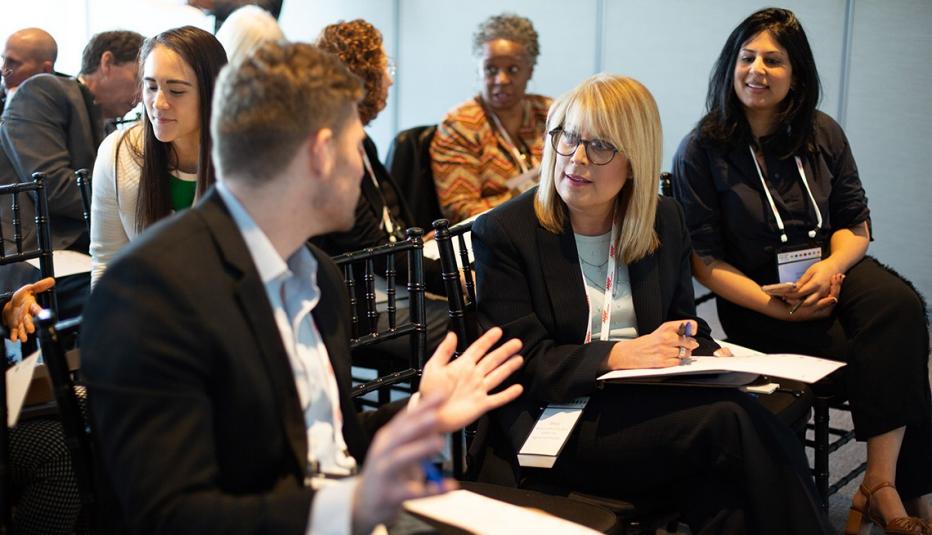AARP Hearing Center
Life ReimaginedSM seeks to be a resource to help guide people through life transitions by helping them discover new possibilities. To gain insight into how people in their 40’s and 50’s live and assess their lives, Life ReimaginedSM commissioned an online survey of people ages 40-59. The survey addresses how they move toward their goals and what they would change if they could. A key element of understanding priorities is what Life ReimaginedSM has labeled a “life budget” – how people allocate their time, energy, and passion across various areas of their lives. The survey explores people’s current “life budget” as well as their ideal.
Key findings from the survey include:
- Overall, most people are happy and are satisfied with their accomplishments in life – despite many who have at least a somewhat stressful life and some who have fallen short of where they had expected to be in life. As shown in this survey: 79% are happy, 69% are satisfied with what they have accomplished in life, 42% have fallen short of expectations, and 66% have at least a somewhat stressful life.
- However, current Life Budgets (i.e., how people allocate their time, energy, and passion across various categories) do not always match ideal ones. The biggest gap can be seen in the allocation devoted to job/career. On average, people devote 21% of their time, energy, and passion to their job or career, while they see 12% as the ideal. Analysis of Life Budgets by parental status shows that 40-59 year-olds with children devote most of their Life Budget to their children (24%), followed by their spouse/partner/significant other (20%), and their job or career (19%). This is close to their ideal for children (25%) and spouse/partner/significant other (23%), but nearly double what they would like to devote to work (11%). Among those without children, the largest budget categories are job or career (24%), spouse/partner/significant other (17%), family (16%), and health/wellness (15%). These are close to their ideal levels for family (14%) and health (18%), but slightly lag their ideal for spouse/partner/significant other (23%) and exceed their ideal for work (13%).
- Although people are split on what is most important in life (between money, meaning/purpose, and lack of fear/worry), most agree they would rather have extra money than extra time. About 4 in 10 people feel it is most important to have a life of meaning and purpose (39%), while roughly 3 in 10 feel it is most important to have enough money to do the things they want (31%) and to have a life without fear and worry (30%). Nevertheless, when asked to choose between extra money and extra time in the day, 71% choose money.
- More financial security tops the list of changes that would increase one’s happiness. Similarly, the top things people would have done differently in their lives pertain to finances. In addition, people feel lack of financial security is the top obstacle to prioritizing things that would make them happier. When asked to select what would most increase their happiness, nearly 4 in 10 say more financial security (39%). Moreover, when people are asked what one thing they would have done differently in their life, 21% wish they had made smarter financial decisions and12% wish they had pursued a career path with more financial security. Thirty-three percent say lack of financial security is the main obstacle to prioritizing things that would make them happier, followed by 20% who say lack of enough time, and 14% who say job demands.
- In addition to financial security, relationships matter and will play a key role in priorities over the next ten years. For parents, 47% say their children brought them the most happiness, followed by their spouse or partner (23%). Over the next ten years, their top priority is family (38%), followed by relationship with spouse/partner/significant other (16%). For those without children, their spouse or partner brought them the most happiness (22%), followed by their friendships (20%). Their top priority over the next ten years is health (25%), followed by relationship with spouse/partner/significant other (17%). In addition, regardless of parental status, more people derive their self-worth from family and close friends (71%) rather than from their job (29%).
- Although few made a New Year’s resolution last year, nearly all value reflection and envisioning change. Only 1 in 4 people (25%) made a New Year’s resolution last year. However, 92% appreciate the value of reflecting on how their life is going and imagining ways they could change or improve it. If a resolution were made this year, the most popular topics would be saving more money (20%), developing good habits (17%), and spending more time with loved ones (16%). Fewer than 4 in 10 people who made at least one New Year’s resolution last year kept all of them (36%).
- Character/integrity, money, and relationships are most often cited as the most important element of “a good life.” Consistent with the emphasis on financial security and relationships, the top element of “a good life” is having strong character and living life with integrity (22%), followed by having the money to live the lifestyle you want and pursue your passions and hobbies (19%), and maintaining strong ties with friends and family (19%).
The survey was written by Luntz Global, LLC in collaboration with Life ReimaginedSM. It was fielded by Global Marketing Research Services from October 7 to October 9, 2014. A total of 1,000 online interviews were completed with adults ages 40-59 in the United States. The results from the study were weighted to be nationally representative. For more information, contact Colette Thayer at cthayer@aarp.org.































































